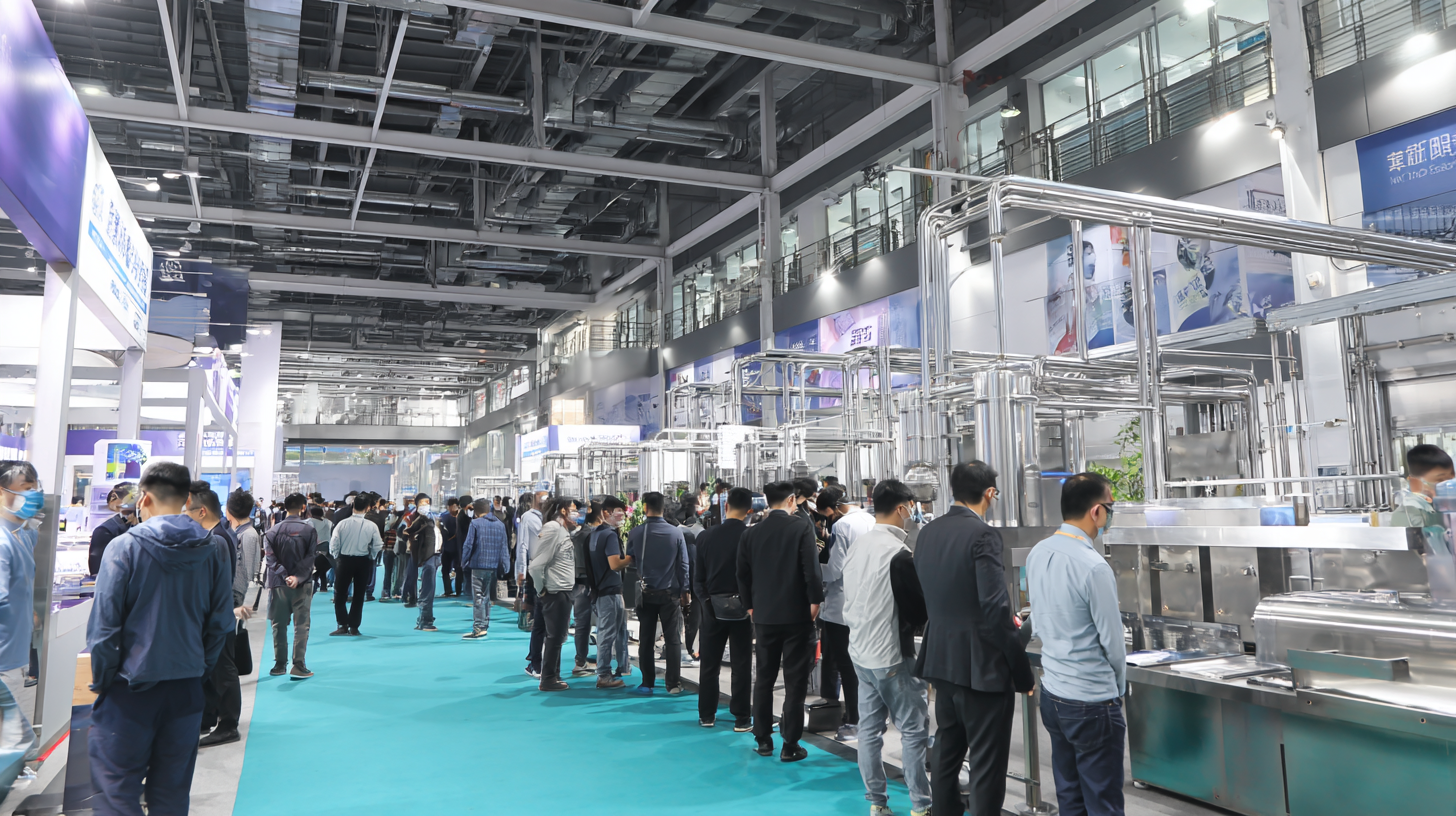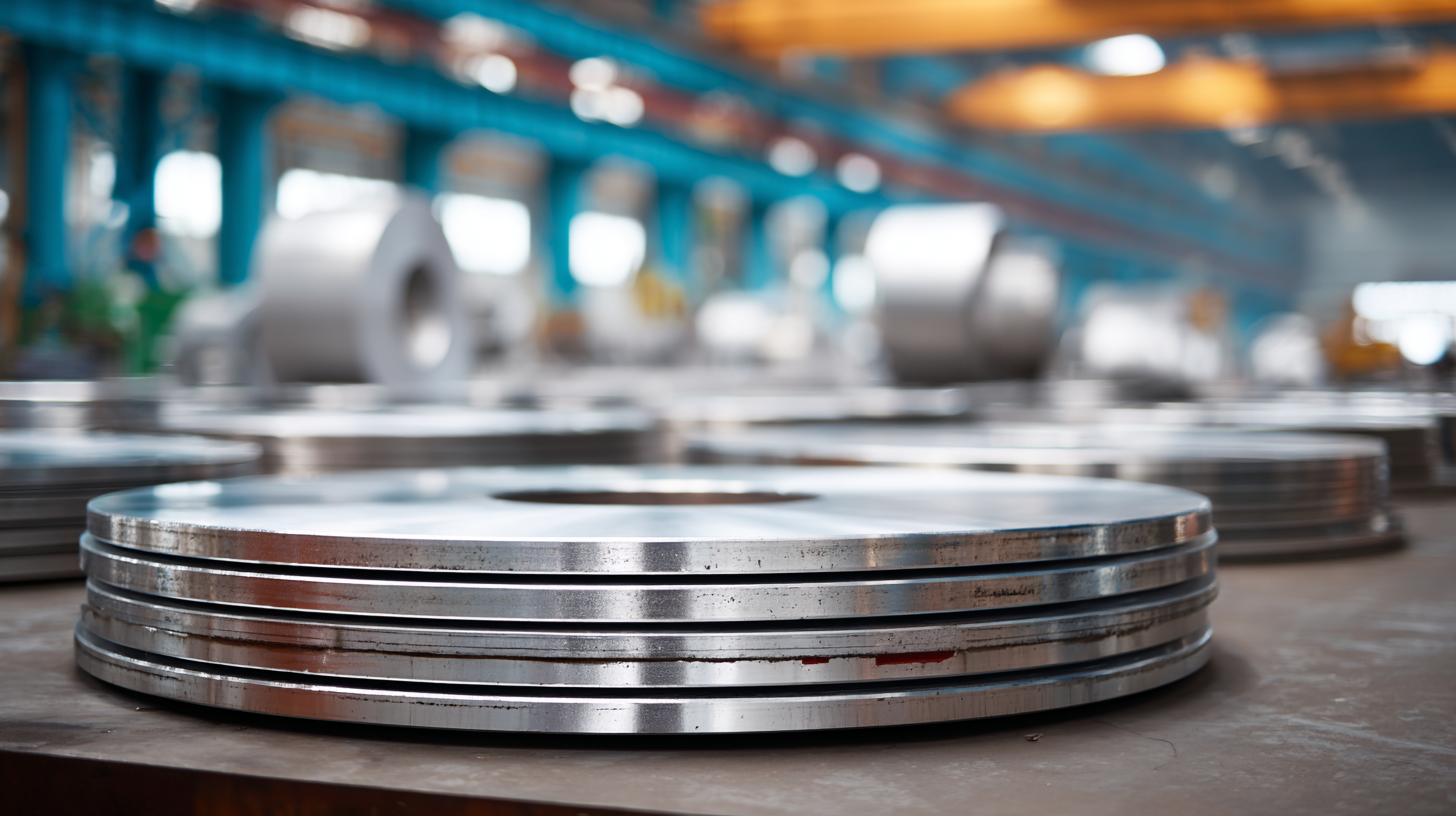Exploring Market Trends for 316 Stainless Steel Plate at the 2025 China Import and Export Fair
As the 2025 China Import and Export Fair approaches, the demand for
316 Stainless Steel Plate is poised to become a
focal point of industry discussions. Recent market studies indicate that the global stainless steel market is
projected to exceed $150 billion by 2025, with a significant portion attributed to the 316
grade due to its superior corrosion resistance and versatility. This robust demand is particularly driven by
sectors such as construction, automotive,
and food processing, where 316 Stainless Steel Plate plays a
crucial role. Reports from industry analysts highlight that the
Asia-Pacific region will continue to dominate the stainless steel
market, contributing over 50% of the total market share. As stakeholders gather at the fair,
understanding these market trends will be vital for positioning products effectively and capitalizing on
growth opportunities in the stainless steel sector.
Market Overview of 316 Stainless Steel Plates in 2025
The market for 316 stainless steel plates is poised for significant growth by 2025, highlighted by increasing demand driven by advancements in manufacturing technologies and the expansion of infrastructure projects. The projected global stainless steel market is expected to grow substantially, with a forecasted increase from USD 329.90 billion in 2025, driven primarily by applications in diverse industries. This trend is set against the backdrop of a volatile raw materials market, which may affect pricing dynamics.
Tips for businesses looking to invest in 316 stainless steel plates include staying informed about the latest technological innovations, such as enhanced welding methods that improve microstructural integrity and corrosion resistance. Furthermore, companies should consider monitoring regional market fluctuations, especially in major markets like India and China, where production cuts and price adjustments could directly influence costs.
Understanding the evolving landscape of the stainless steel market is crucial. A continued focus on quality control and the adoption of superior welding technologies, like CO₂ gas metal arc welding for 316L stainless steel, can significantly enhance the performance and reliability of finished products. Keeping abreast of these changes will better position manufacturers to meet customer demands effectively in the upcoming years.
Market Trends for 316 Stainless Steel Plate at the 2025 China Import and Export Fair
This chart illustrates the projected market demand for 316 stainless steel plates throughout the year 2025, highlighting key trends and fluctuations across the four quarters of the year.
Key Players and Competitors in the 316 Stainless Steel Market
The 316 stainless steel market is characterized by several key players and competitors who are shaping the industry landscape. Companies such as Outokumpu, Acerinox, and Jindal Stainless have established significant market shares due to their extensive product offerings and global reach. According to a recent industry report by Grand View Research, the global stainless steel market is expected to grow at a CAGR of 5.5% from 2023 to 2030, with 316 stainless steel as one of the favored grades due to its corrosion resistance and durability. This growth presents opportunities for both emerging and established players to innovate and expand their market presence, especially at key trade shows like the 2025 China Import and Export Fair.
Tips: As competition intensifies, companies should focus on enhancing their supply chain efficiencies and product quality to meet the demands of various industries, including automotive and construction. Additionally, investing in sustainable production practices can not only improve brand reputation but also attract increasingly eco-conscious consumers.
Furthermore, understanding regional demand variations is crucial. The Asia-Pacific region, particularly China, is anticipated to witness substantial growth, driven by urbanization and infrastructure development. Companies must adapt their strategies to cater to the localized needs of different markets, highlighting the importance of thorough market research and competitive analysis in navigating this dynamic environment.
Impact of Global Trade Policies on Stainless Steel Imports and Exports
As the global market for 316 stainless steel plate unfolds towards the 2025 China Import and Export Fair, the influence of global trade policies cannot be overlooked. Trade agreements and tariffs significantly shape the dynamics of imports and exports, particularly in the stainless steel sector. Countries are increasingly adopting protectionist measures, which can lead to increased costs for manufacturers and consumers alike. Businesses must stay ahead of these changes to navigate the complex landscape of international trade effectively.
Tips: To remain competitive, companies should regularly analyze emerging trade policies and their potential impact on procurement strategies. Partnering with local distributors can also mitigate risks associated with fluctuating tariffs and trade barriers.
The strategic importance of compliance with global trade regulations cannot be emphasized enough. Organizations should invest in understanding the implications of various trade agreements—such as the Regional Comprehensive Economic Partnership (RCEP)—that may affect their supply chains. Engaging with trade experts will provide insights that could greatly enhance decision-making processes and ensure smoother operations during the import and export phases.
Tips: Joining industry associations can provide valuable resources and networking opportunities that help businesses stay informed about trade policy changes. Regular training sessions for employees on compliance can further bolster a company’s ability to adapt to shifting market conditions.

Emerging Trends in 316 Stainless Steel Applications and Innovations
The 316 stainless steel market is witnessing notable innovations and applications as diverse industries seek enhanced material properties. Recent market reports indicate a significant growth in demand for 316 stainless steel due to its superior resistance to corrosion and high temperatures, making it an ideal choice for marine, chemical, and pharmaceutical applications. According to a 2023 report by Market Research Future, the global stainless steel market is projected to reach $140 billion by 2027, with 316 stainless steel accounting for approximately 25% of this growth due to its exceptional performance characteristics.

Emerging trends highlight the increasing use of 316 stainless steel in the renewable energy sector, particularly in the construction of offshore wind farms and solar energy systems. A study by Smithers Pira reveals that the adoption of corrosion-resistant materials like 316 stainless steel can increase the lifespan of these installations by up to 30%, significantly reducing maintenance costs. Additionally, advancements in manufacturing processes, such as additive manufacturing, are opening new avenues for the development of complex geometries and lightweight components, further enhancing the versatility of 316 stainless steel in various applications. As these trends continue to evolve, the demand for high-quality 316 stainless steel will likely surge, positioning it as a crucial material in future industrial solutions.
Opportunities and Challenges for Buyers and Suppliers at the Fair
The upcoming 2025 China Import and Export Fair presents both unique opportunities and challenges for buyers and suppliers in the 316 stainless steel plate market. As one of the premier trade events in China, it facilitates a dynamic platform for networking, showcasing products, and understanding evolving market trends. Buyers will have the chance to meet with numerous suppliers, gaining insights into the latest advancements in stainless steel manufacturing and the quality standards essential for various applications.
However, navigating this vast marketplace is not without its challenges. Suppliers must be prepared to address growing competition, particularly with a shift toward digital channels in retail and procurement. The increase in global trade exhibitions, such as the recent CCBEC Shenzhen Cross-Border E-commerce Expo, highlights the importance for suppliers to distinguish themselves and effectively communicate their value proposition. Buyers, on the other hand, need to adapt to fluctuating prices and sourcing strategies amidst a complex international trade landscape. Success at the fair will depend on both parties' ability to leverage information and resources effectively, ensuring they come away with profitable partnerships and insightful market knowledge.

Home
About Us
Products
Stainless Steel Anchor Chain
Manganese Steel Lifting Chain Grade 80
Manganese Steel Lifting Chain
Hastelloy Round Bars
Hastelloy Sheet
Hastelloy steel pipe
Stainless steel wire rope
Stainless steel round
Stainless steel hexagonal rod
Stainless steel strip
Plastic coating wire rope
Stainless steel plate
Stainless steel angle
Stainless steel pipe
Stainless steel wire
Stainless steel flange
Stainless steel channel
Stainless steel flat steel
Industries
News
Service
Blog
Contact Us








